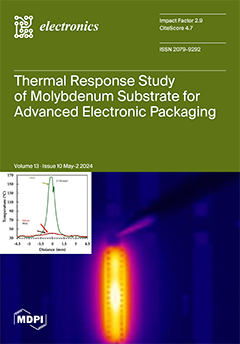Electricity load forecasting is a crucial undertaking within all the deregulated markets globally. Among the research challenges on a global scale, the investigation of deep transfer learning (DTL) in the field of electricity load forecasting represents a fundamental effort that can inform artificial
[...] Read more.
Electricity load forecasting is a crucial undertaking within all the deregulated markets globally. Among the research challenges on a global scale, the investigation of deep transfer learning (DTL) in the field of electricity load forecasting represents a fundamental effort that can inform artificial intelligence applications in general. In this paper, a comprehensive study is reported regarding day-ahead electricity load forecasting. For this purpose, three sequence-to-sequence (Seq2seq) deep learning (DL) models are used, namely the multilayer perceptron (MLP), the convolutional neural network (CNN) and the ensemble learning model (ELM), which consists of the weighted combination of the outputs of MLP and CNN models. Also, the study focuses on the development of different forecasting strategies based on DTL, emphasizing the way the datasets are trained and fine-tuned for higher forecasting accuracy. In order to implement the forecasting strategies using deep learning models, load datasets from three Greek islands, Rhodes, Lesvos, and Chios, are used. The main purpose is to apply DTL for day-ahead predictions (1–24 h) for each month of the year for the Chios dataset after training and fine-tuning the models using the datasets of the three islands in various combinations. Four DTL strategies are illustrated. In the first strategy (DTL Case 1), each of the three DL models is trained using only the Lesvos dataset, while fine-tuning is performed on the dataset of Chios island, in order to create day-ahead predictions for the Chios load. In the second strategy (DTL Case 2), data from both Lesvos and Rhodes concurrently are used for the DL model training period, and fine-tuning is performed on the data from Chios. The third DTL strategy (DTL Case 3) involves the training of the DL models using the Lesvos dataset, and the testing period is performed directly on the Chios dataset without fine-tuning. The fourth strategy is a multi-task deep learning (MTDL) approach, which has been extensively studied in recent years. In MTDL, the three DL models are trained simultaneously on all three datasets and the final predictions are made on the unknown part of the dataset of Chios. The results obtained demonstrate that DTL can be applied with high efficiency for day-ahead load forecasting. Specifically, DTL Case 1 and 2 outperformed MTDL in terms of load prediction accuracy. Regarding the DL models, all three exhibit very high prediction accuracy, especially in the two cases with fine-tuning. The ELM excels compared to the single models. More specifically, for conducting day-ahead predictions, it is concluded that the MLP model presents the best monthly forecasts with MAPE values of 6.24% and 6.01% for the first two cases, the CNN model presents the best monthly forecasts with MAPE values of 5.57% and 5.60%, respectively, and the ELM model achieves the best monthly forecasts with MAPE values of 5.29% and 5.31%, respectively, indicating the very high accuracy it can achieve.
Full article





